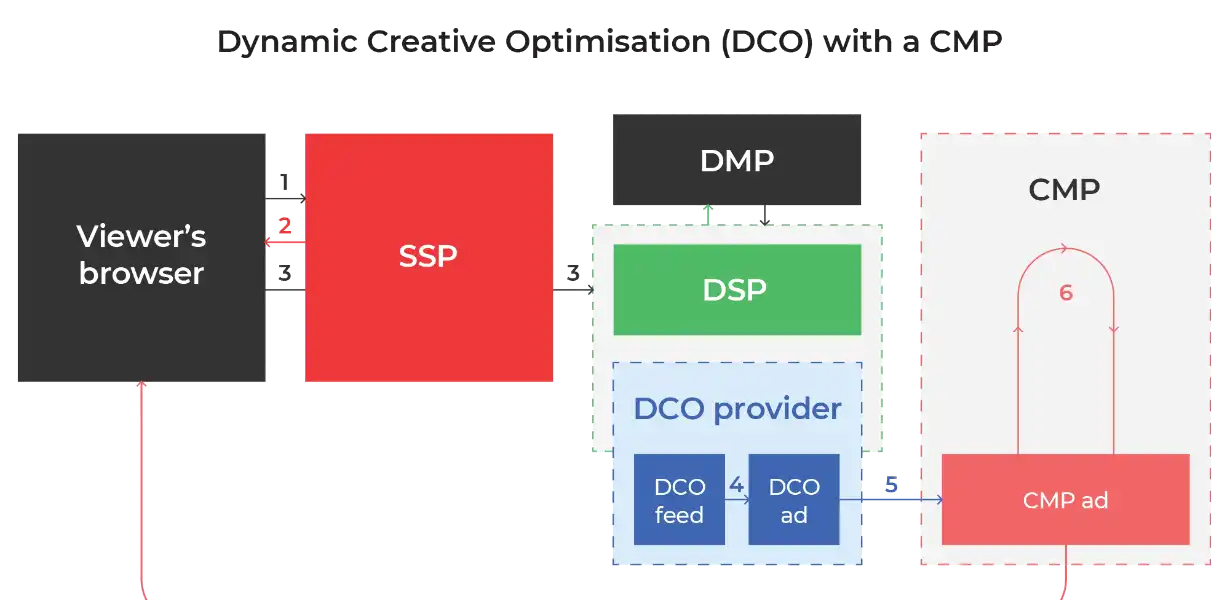
Adapting to Algorithms: Leveraging DCO to Stay Ahead in Social Media Marketing
- Post
- August 9, 2023
- Ad Serving Tech, DCO for Social Media, Dynamic Creative Optimization
- 0 Comments
In the dynamic landscape of social media marketing, staying ahead of the curve requires a deep understanding of algorithms and the tools to adapt to their ever-evolving nature. One such tool that has gained significant traction is Dynamic Creative Optimization (DCO). In this comprehensive guide, we delve into the intricacies of DCO and how it empowers marketers to create tailored and effective campaigns that not only resonate with their audience but also outperform competitors in the realm of social media marketing.
Understanding DCO: Unleashing the Power of Personalization
Dynamic Creative Optimization (DCO) is more than just a buzzword; it’s a strategic approach that harnesses the potential of personalization. By leveraging DCO, marketers can craft hyper-personalized content that dynamically adjusts based on the viewer’s preferences, behaviors, and demographics. This method transcends the one-size-fits-all approach, enabling brands to establish a deeper connection with their audience.
DCO works by generating various combinations of ad elements, such as headlines, images, and calls-to-action, in real-time. This approach ensures that the most relevant and engaging content is presented to each viewer, enhancing the chances of conversion.
The Algorithmic Advantage: Aligning with Social Media Algorithms
Social media algorithms prioritize content that engages users and keeps them on the platform. DCO aligns seamlessly with these algorithms by delivering content that resonates with users’ interests and behaviors. Algorithms reward engagement, and personalized DCO campaigns have shown to yield higher engagement rates, thereby increasing the likelihood of content being favored by the algorithms.
Data-Driven Success: The Role of Big Data in DCO
At the heart of DCO lies big data. Analyzing user data provides insights into preferences, behaviors, and trends, which in turn fuels the creation of personalized content. By harnessing this wealth of data, marketers can optimize their campaigns, fine-tuning elements that yield the most favorable responses.
Crafting Compelling Creatives: Tailoring for Impact
Effective DCO campaigns require a creative approach that complements the dynamic nature of the strategy. Compelling visuals, well-crafted copy, and strategic placement are essential components of DCO creatives. Each element must work harmoniously to deliver a seamless and engaging experience to the viewer.
Navigating Challenges: Balancing Automation and Brand Voice
While DCO offers automation advantages, maintaining brand voice can be challenging. Striking the right balance between personalization and brand identity is crucial. Marketers must ensure that the dynamically generated content aligns with the brand’s tone, values, and messaging.
Technical Underpinnings: How DCO Infrastructure Works
The infrastructure supporting DCO involves a blend of data management platforms, creative management platforms, and ad servers. Data management platforms collect and process user data, while creative management platforms dynamically assemble ad elements. Ad servers then deliver these personalized ads to the intended audience.
Metrics that Matter: Measuring DCO Success
In the realm of social media marketing, accurate measurement is vital. Key performance indicators (KPIs) such as click-through rates, conversion rates, and engagement rates offer insights into the effectiveness of DCO campaigns. Continuous monitoring and analysis allow marketers to refine their strategies for optimal results.
Staying Ahead of the Curve: Embracing AI and Machine Learning
Artificial Intelligence (AI) and Machine Learning (ML) are instrumental in enhancing DCO capabilities. These technologies analyze user data patterns to predict and serve the most relevant content. By incorporating AI and ML, marketers can refine their targeting strategies and further boost campaign performance.
Future Trends: The Evolution of DCO in Social Media Marketing
The future of DCO holds exciting possibilities. As AI and data analytics continue to advance, DCO campaigns will become even more precise and efficient. Marketers can anticipate the integration of real-time contextual data, enabling ads to adapt not only to user behavior but also to current events and trends.
Final Words
In the fast-paced world of social media marketing, adapting to algorithms is not just a choice – it’s a necessity. Dynamic Creative Optimization (DCO) emerges as a beacon of personalized marketing, allowing brands to connect with their audience in meaningful ways. By embracing DCO’s power, marketers can not only stay ahead of the curve but also shape the future of social media marketing.
Commonly Asked Questions
Q1: Is DCO suitable for all types of businesses?
Absolutely. DCO’s flexibility makes it suitable for businesses across various industries. Tailoring content to individual preferences and behaviors can enhance engagement and conversion rates for any brand.
Q2: How does DCO impact budget allocation?
DCO’s data-driven approach optimizes ad spend by focusing on elements that resonate most with the audience. This leads to higher ROI and more efficient budget utilization.
Q3: Can DCO be applied beyond social media?
Yes, DCO principles can be extended to other digital advertising channels like display ads and email marketing. Any platform benefiting from personalized content can harness DCO’s potential.
Q4: Does DCO replace traditional creative efforts?
No, DCO enhances traditional creative efforts by infusing personalization. It doesn’t replace creativity but empowers it with data-driven insights.
Q5: How quickly can DCO yield noticeable results?
DCO campaigns often show relatively quick results due to their personalized nature. However, the timeline may vary based on factors such as the complexity of the campaign and the size of the audience.



